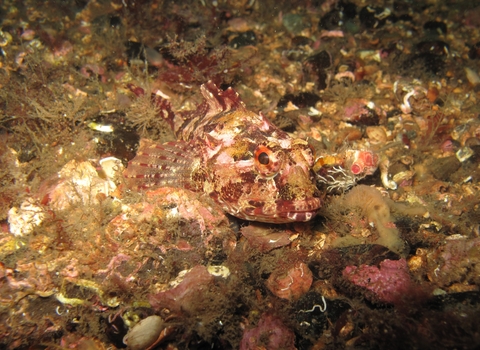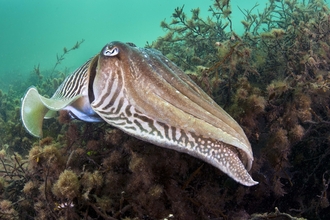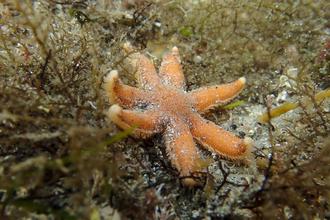
Long spined sea scorpion by Polly Whyte
Long spined sea scorpion
Masters of disguise, this species exhibits one of the best examples of camouflage you will find on the seashore!
Scientific name
Taurulus bubalisWhen to see
April to OctoberSpecies information
Statistics
Up to 20cm longConservation status
Common




